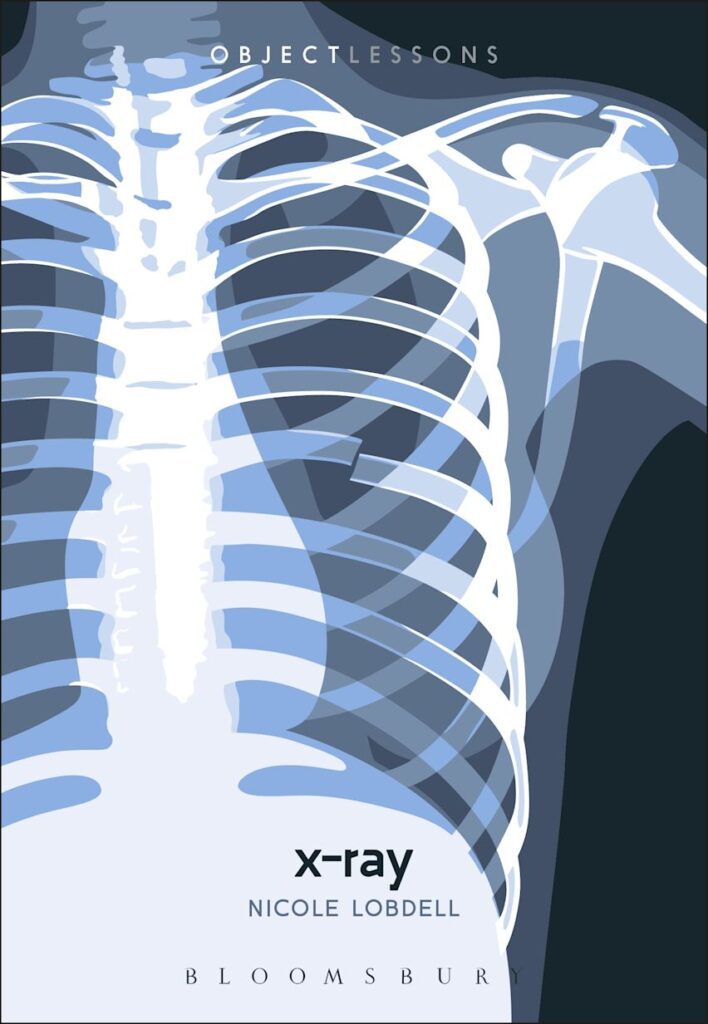Arpan K. Banerjee
Solihull, England

X-ray by Nicole Lobdell is the latest in the Bloomsbury Collection series “Object Lessons,” which examines the hidden and unexplored aspects of ordinary things that have become a part of modern life. X-rays have long been a source of fascination, not just to scientists and doctors for their medical uses, but also to the general public, who have speculated about and experimented with X-rays in art, literature, cinema, music, and popular culture.
The opening chapter covers Wilhelm Röntgen’s discovery on 8 November 1895 in Wurzburg, Germany. X-rays were so named after the term used by French philosopher Rene Descartes for “the unknown.” X-rays were soon used in war settings, including the efforts of Marie Curie and the mobile ambulances with X-ray equipment used in the First World War.
Paleontologists and archeologists have used X-rays to study bones and objects from ancient times, including an important role in understanding Egyptian mummies. X-rays have also been used as evidence in criminal cases. Soon after their discovery, X-rays became the subject of films as early as 1897 in X-ray Friend and Georges Méliès’s 1898 A Novice at X-rays.
Early X-ray pioneers suffered radiation injuries. The story of Clarence Dally, Thomas Edison’s glass blower, is a salutary reminder of these dangers.
X-rays played an important in tuberculosis screening. It was also used in identifying the bullet in the 1901 assassination attempt on William McKinley, the 25th US President. In popular culture, the science fiction writer H.G. Wells was fascinated by the idea of invisibility in his 1897 book The Invisible Man, which had been influenced by the idea of X-rays. Stories and comic books focused on the idea of X-rays and the potentially magical powers of seeing through objects, culminating in the Roger Corman film The Man with X-ray Eyes starring Ray Milland. Even the Superman stories endowed the superhero with X-ray vision to save mankind from enemies.
X-rays found their way into the field of photography with X-ray art techniques pioneered in the latter half of the twentieth century by Nick Veasey and others. They have also been used to detect harmful objects at airport security. The film Die Hard 2 is cited as an example, where terrorists used porcelain guns to bypass X-ray machines at airports. This generated hysteria amongst the public based on the false premise that guns could be made of porcelain undetectable by an X-ray machine.
X-rays have found uses in detecting foreign bodies in humans, such as the large collection of cases by surgeon Chevalier Jackson, which are stored in the Museum of Pathology in Philadelphia.
The book is well written and the anecdotes and stories, predominantly from the US about the role of X-rays in popular culture, make for interesting reading.
X-ray
Nicole Lobdell, Bloomsbury Publishing, 2024
ISBN 9781501386701
DR. ARPAN K. BANERJEE qualified in medicine at St Thomas’s Hospital Medical School. London. He was a consultant radiologist in Birmingham 1995–2019. He was President of the radiology section of the RSM 2005–2007 and on the scientific committee of the Royal College of Radiologists 2012–2016. He was Chairman of the British Society for the History of Radiology 2012–2017. He is Chairman of ISHRAD. He is author/co-author of papers on a variety of clinical, radiological, and medical historical topics and eight books, including Classic Papers in Modern Diagnostic Radiology (2005) and The History of Radiology (OUP 2013).

Leave a Reply